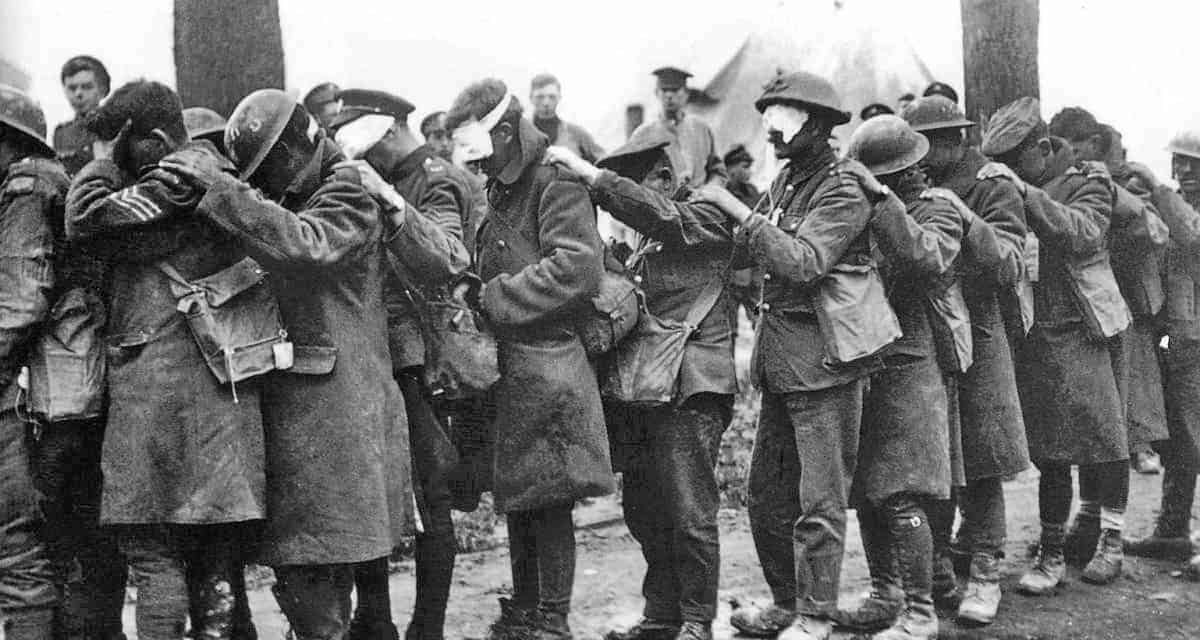Fritz Haber’s life started brilliantly, then took a dark turn, before plunging into the horrific. On the plus side, his contributions to science were so great, that our modern world would be impossible without them. Haber’s breakthrough discoveries play a vital role in enabling the everyday lives of billions around the world.
On the downside, Haber did not dedicate his brilliant mind solely to the good of humanity. He also deployed his considerable talents to invent some of warfare’s scariest instruments. Thanks to him, human conflict, which had already been horrible long before Haber, took a nasty turn for the infinitely worse. Then, as if in a Greek tragedy, Haber’s life ended with an about-turn from celebrated savior to shunned pariah, and his innovations came back to claim his flesh and blood.

The Good
Fritz Haber was born in Prussia in 1868, into a well-off Jewish family. In the rapidly liberalizing Germany of his days, he was the first generation of Jews to lead their lives without the legal discrimination that had blighted the lives of Haber’s ancestors for centuries. Haber embraced that inclusiveness, and took great pride in being a German. As he put it: “[Jews] want only one limit, the limit of our own ability“. As it turned out, Haber’s abilities were extraordinary.
In the 1840s, German chemist Justus von Liebig had revolutionized agriculture by demonstrating the importance of nitrogen as a plant nutrient. As a result, the demand for potassium nitrate, or nitre, and ammonia, grew steadily throughout the 19th century, for use in fertilizers and industrial feedstock. Nitre had initially been used in medicines and early chemistry, but the demand exploded with the discovery of gunpowder, as nitrated salts known as saltpeter were a key ingredient. Then von Liebig came along, and caused the already high demand to skyrocket.
Throughout human history, mankind had extracted nitre from manure, seaweed, and increasingly in the 19th century, guano: bird and bat shit, that piled up into gargantuan mounds in some parts of the world. Indeed, so important did guano become, that The War of the Pacific (1879 – 1883) was fought between Peru and Chile to decide the ownership of guano deposits along their border. Chile won, seized the nitrate-producing regions, and its nation grew by 900% as a result.

However, by the early 20th century, it was widely predicted that the known sources of nitrate could not satisfy future demand and that when the deposits of guano were eventually depleted, catastrophe would ensue. It was believed that the human population would max out at 1.5 billion, before mass starvation set in. Ironically, the famine was expected to result from a shortage of nitrogen, even though 80% of the earth’s atmosphere is made of nitrogen. Unfortunately, nobody knew how to extract it efficiently. Then Fritz Haber came up with the Haber process, to extract nitrogen from the air in industrial quantities.
By forcing air into giant tanks, and subjecting it to extreme heat and pressure while adding hydrogen, nitrogen atoms would pry apart, each bonding with three hydrogen atoms to form ammonia. Haber had literally pulled fertilizer out of the air. In 1909, he announced his breakthrough, and revolutionized agriculture. Today, 100 million tons of fertilizer are produced each year using the Haber process, and the planet’s current population of 7 billion plus would be impossible without it. For most humans today, half the nitrogen in our bodies is there thanks to Haber, who won the Nobel Prize in 1918 for his discovery.

